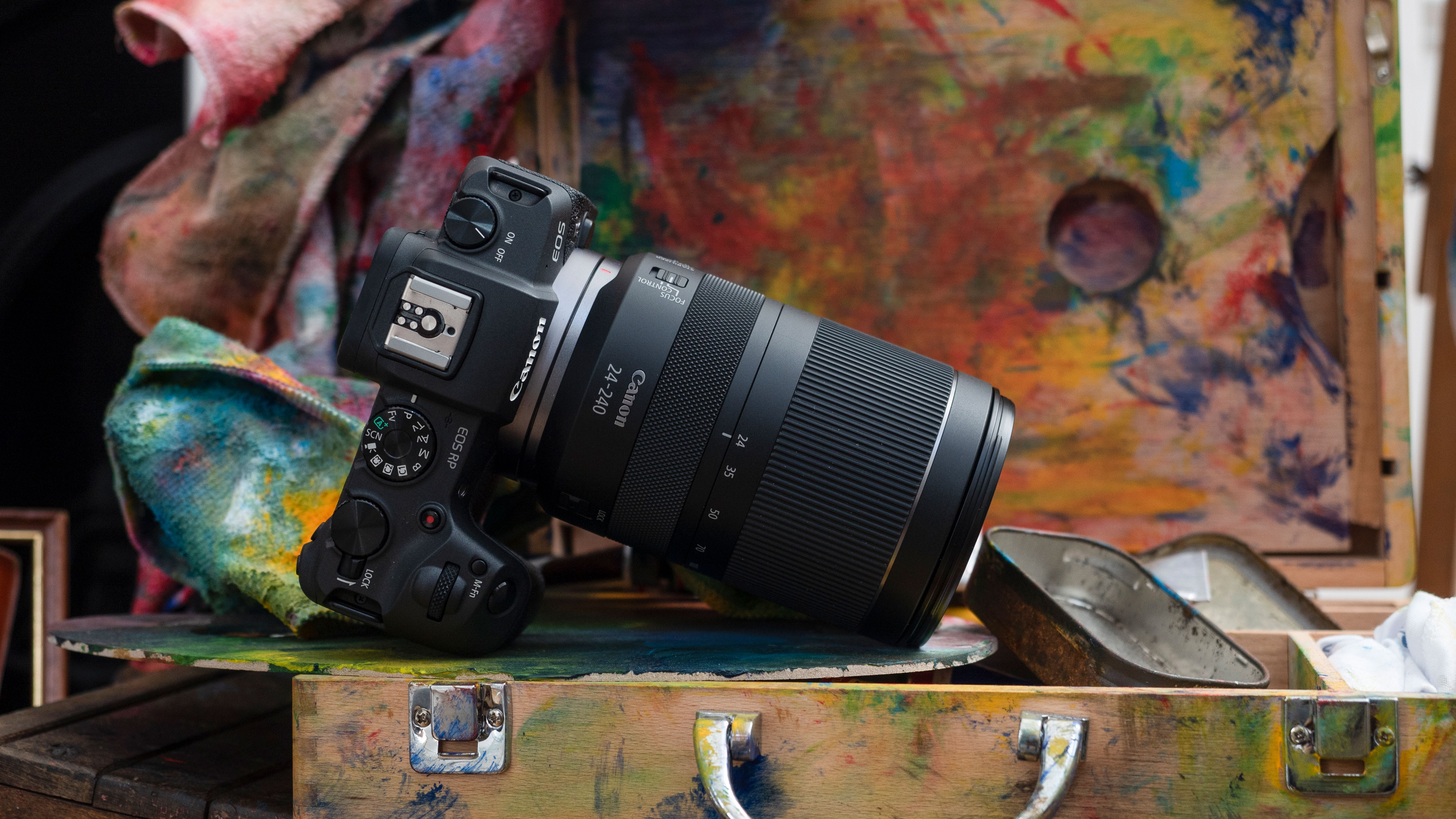Digital Camera World Verdict
Any full frame superzoom lens is going to be BIG, but the Canon RF 24-240mm f/4-6.3 IS USM balances much better on the EOS RP body than we were expecting. It’s comparatively light, it’s neat and simple to use and it’s a good value bundle when bought with an EOS RP. What's exceptional is the optical performance in such a long range zoom, achieved with a lot of help (no doubt controversially) from digital corrections.
Pros
- +
10x zoom range
- +
Light and well balanced
- +
Exceptional result from a superzoom
Cons
- -
Modest maximum aperture
- -
Lacks L-series build quality
- -
Good image quality but not stellar
Why you can trust Digital Camera World
It’s every photographer’s dream – a single lens that can do the job of two or more individual optics, that saves weight and space in your camera bag and saves all that tiresome lens-swapping and the missed shots that so often go with it.
The Canon RF 24-240mm f/4-6.3 IS USM has been on the Canon RF lens roadmap for a while, but now you can actually buy it, either on its own or as a bundle with an EOS RP body. You can use it on the EOS R too, of course, but this is very much a ‘consumer’ lens rather than one of Canon’s premium L-series optics. Canon does need to broaden the appeal of its EOS R series to keep it up amongst the best Canon cameras.
Superzoom lenses don’t usually set high standards for optical performance, and you won't find many on our list of the best Canon lenses, but Canon says the performance of the RF 24-240mm f/4-6.3 IS USM is ‘RF quality’, meaning that it exploits the new RF lens mount width and flange distance and Canon’s latest lens technologies to meet new, higher standards of performance.
That will be good news to photographers wary of ‘superzoom’ lenses, which traditionally bring lots of optical compromises in exchange for that extended focal length.
• Best Canon RF lenses for EOS R and EOS RP
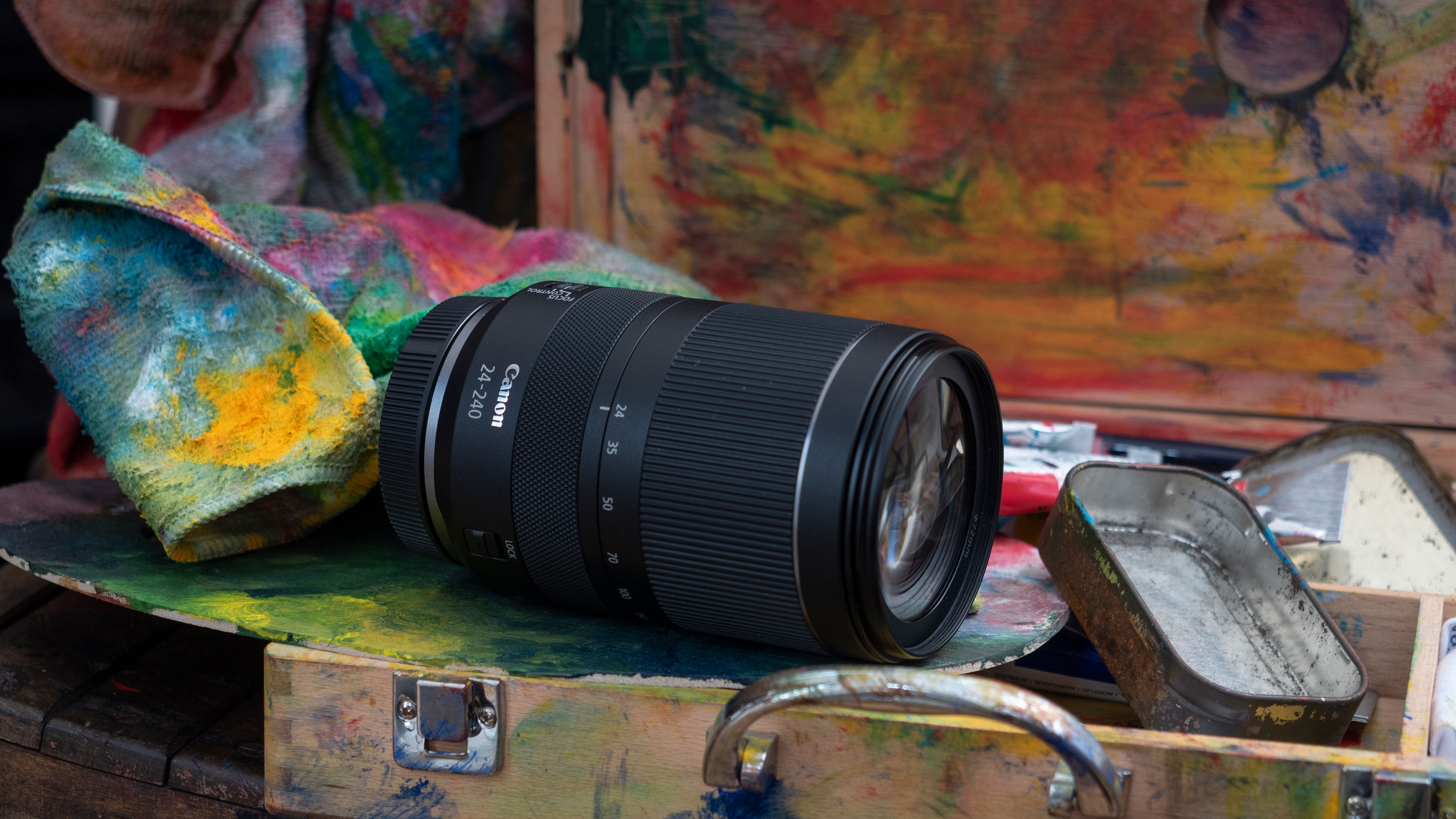
Build and handling
A full-frame 24-240mm superzoom lens is never going to be small and we were worried about how this one would match up to the petite EOS RP body – but the combination actually handles quite well. Visually, it looks like a big lens on a small camera, but the weight distribution feels fine, and the RF 24-240mm f/4-6.3 IS USM has a neat, cylindrical profile not the widening front-heavy ‘trumpet’ shape often seen on bigger lenses.
With the lens fitted, the EOS RP won’t sit quite ‘flat’ on a level surface, which is a shame, and the long zoom range means there’s a two-stage barrel extension as you zoom towards the maximum focal length, but this still doesn’t really upset the balance.
The finish does feel a little plasticky, but at the same time the lens feels well put together with little or no play or ‘wobble’, even when fully extended. The finish is not up to the standard of Canon’s L-series lenses, but then you’re not paying L-series prices.
Performance
The nano USM autofocus feels fast and positive, and Canon explains that it’s designed both for responsive still image shooting and smooth AF transitions when shooting video. It did hunt a little in low light at long zoom settings, but the AF is both snappy and silent in more normal conditions. It’s completely silent while filming, with super-smooth focus transitions.
Canon is also very excited about this lens’s 5-stop image stabilisation system. The ‘steadying’ effect is very visible in the viewfinder, though in practice we found it no better or worse than most other stabilisers. The better you are at steady handheld photography, the better your results will be. We wouldn’t want to rely on more than a 2-3 stop advantage, though we’re sure the lens can achieved Canon’s claimed 5-stop gain in the right conditions.





The stabilizer doesn’t help much while filming, but that’s not what image stabilizers are for – you really need a gimbal to smooth out camera movement properly.
The image quality is very good for a lens of this type. As usual with a superzoom, we saw a drop-off in performance at full zoom, but while the edges of the frame start to soften up quite noticeably at 240mm, the center is still pretty sharp – and the contrast is excellent.
At shorter focal lengths, the RF 24-240mm f/4-6.3 IS USM produces visually sharp images right across the frame, and it also offers surprisingly nice bokeh at long focal lengths and wide apertures.
There is one thing to be aware of. This lens relies heavily on digital as well as optical corrections, so that although images straight from the camera show now distortion, uncorrected raw files in Adobe Camera Raw show strong corner clipping – yes, clipping, not just shading. With a correction profile applied, raw files are just as 'straight' as the JPEGs. Is digital correction cheating? Well, if it means we get lenses and results that wouldn't otherwise be possible, we say it's all fair.
Lab tests
Canon RF 24-240mm f/4-6.3 IS USM: center sharpness
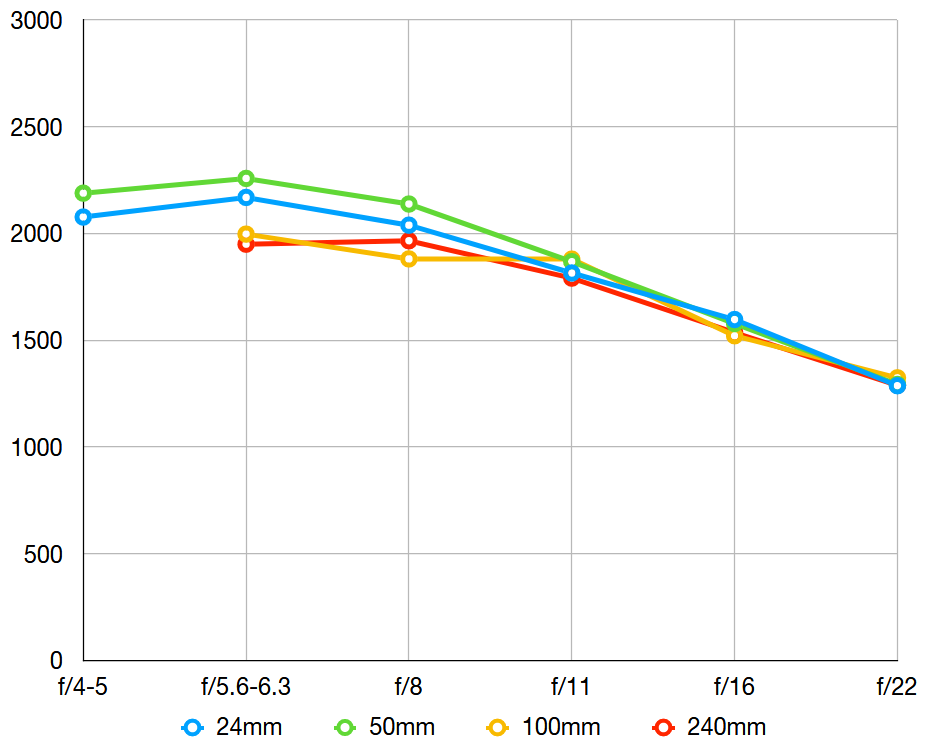
This is a very good performance for a 10x superzoom lens. As we'd expect, the resolution does drop away at longer focal lengths, but only by a very small amount. This is unusual. Peak resolution is at or near maximum aperture, right across the zoom range, so there's no need to stop this lens down for best sharpness.
Canon RF 24-240mm f/4-6.3 IS USM: edge sharpness
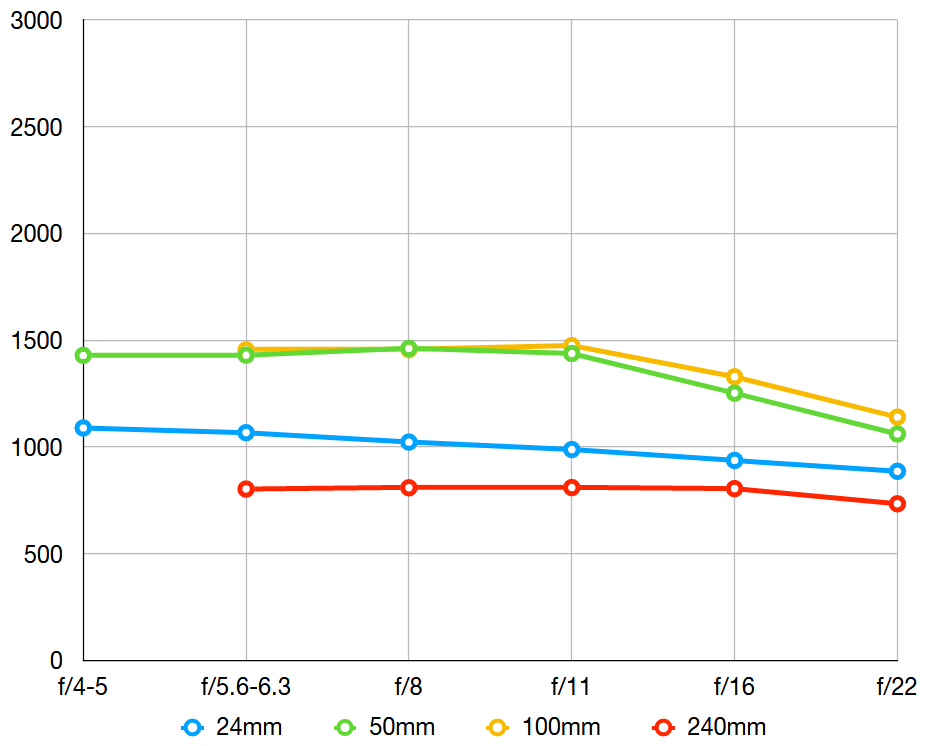
The Canon RF 24-240mm f/4-6.3 IS USM can't quite maintain this level of resolution at the edges of the frame. It's very good in the middle of the zoom range, at around 50-100mm, but pretty poor at 24mm and even worse at 240mm, where the edge softness is visible to the naked eye. Interestingly, stopping down doesn't help here either.
Canon RF 24-240mm f/4-6.3 IS USM: color fringing
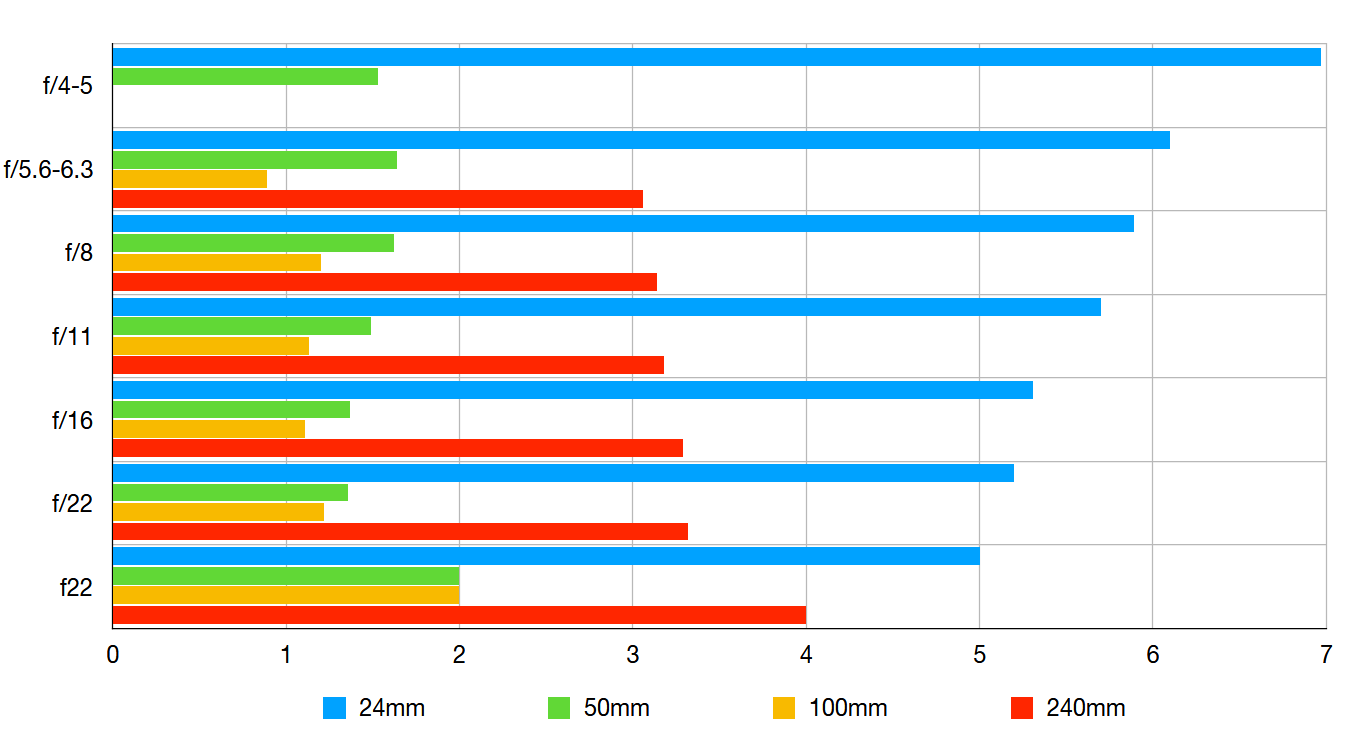
The Canon RF 24-240mm f/4-6.3 IS USM's color fringing is worst at shorter focal lengths and wider apertures, but does improve a little on stopping down. HOWEVER, these test were carried out on uncorrected raw files, and this is a lens design that relies on both digital and optical correction to reach its full potential. Corrected images (corrected in-camera or with lens correction profiles in software) will yield different results.
Canon RF 24-240mm f/4-6.3 IS USM: distortion
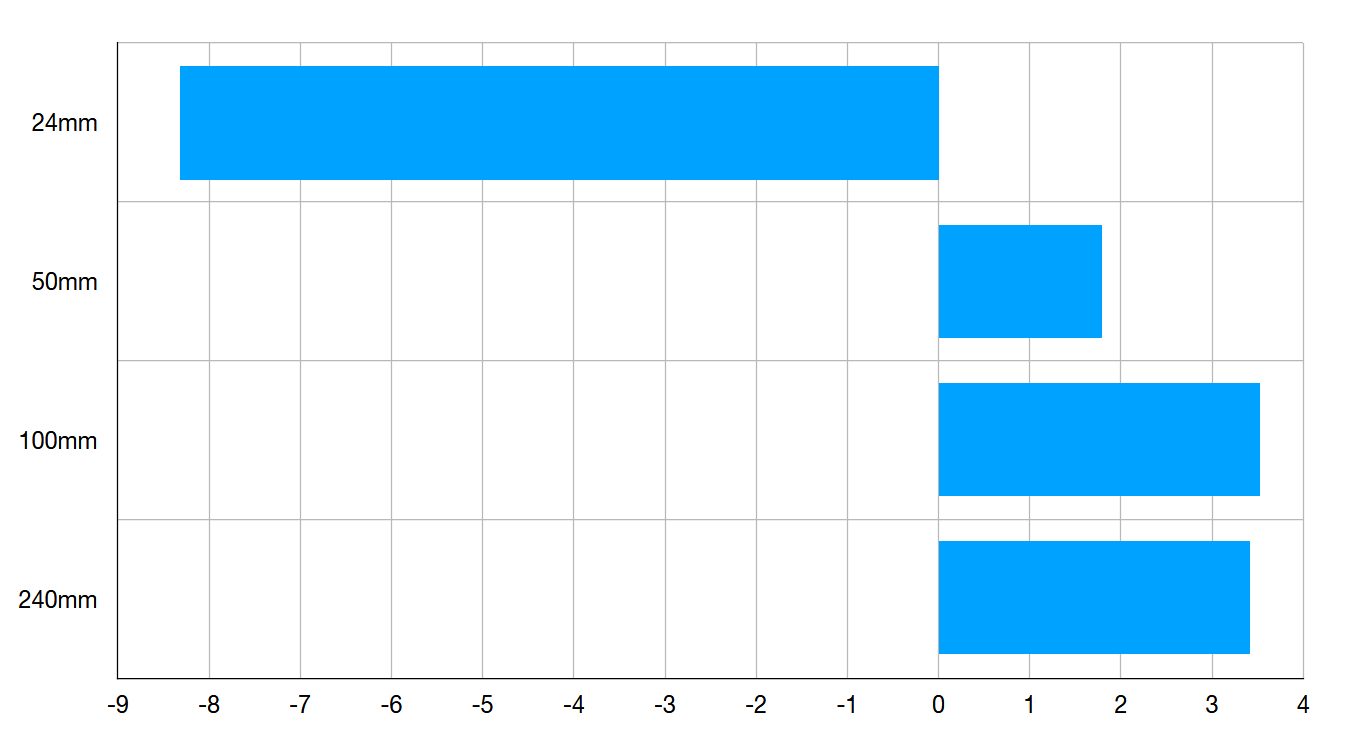
The distortion value ON UNCORRECTED IMAGES at 24mm is extremely high, to the extent that the corners of uncorrected images are clipped to black. From 50mm onwards this heavy barrel distortion swaps to mild pincushion distortion. If you use corrected images (as we believe is intended with this lens), distortion is practically non-existent.
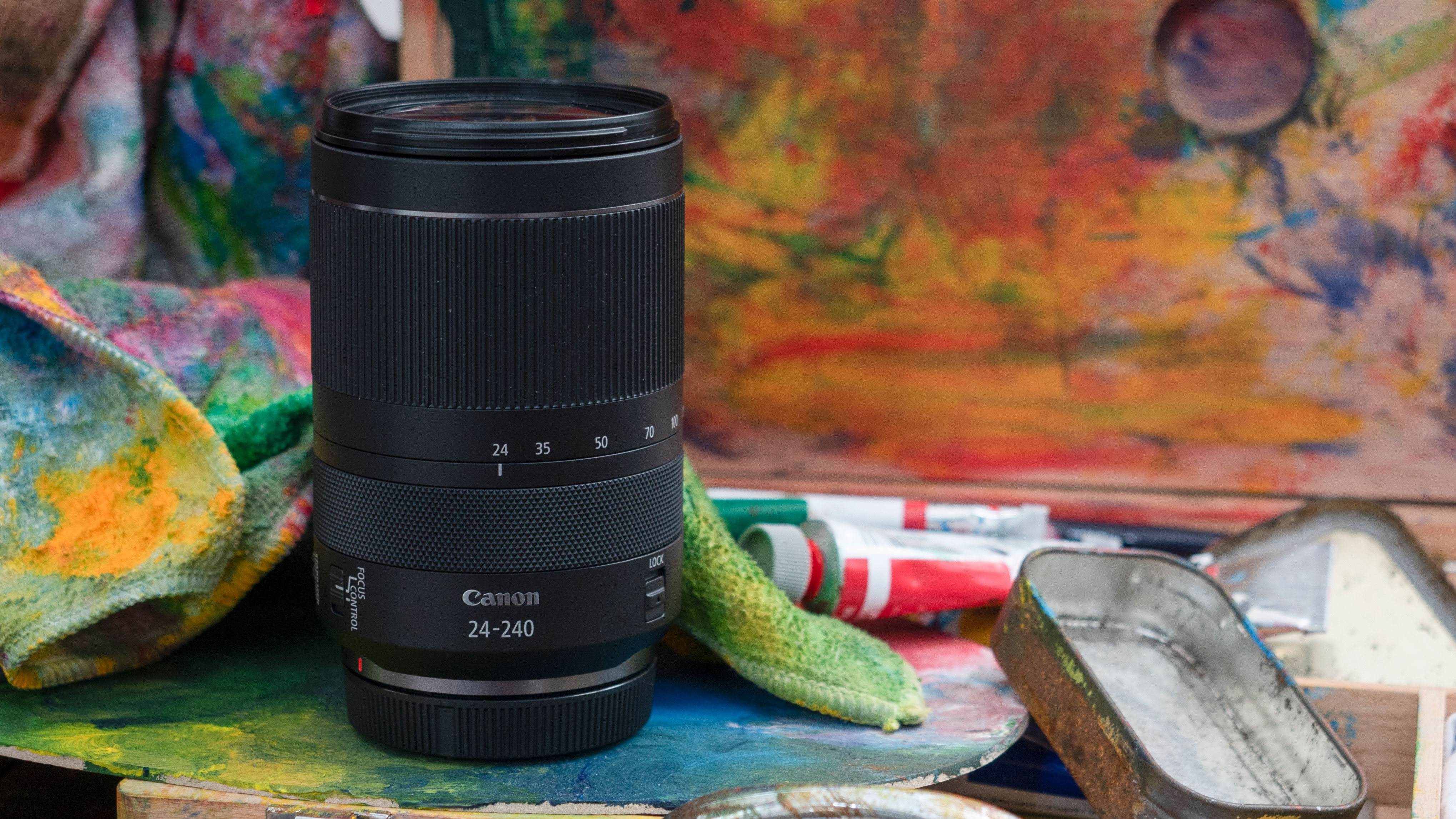
Verdict
It’s been a while since Canon made a new 10x full frame superzoom, so it clearly has some confidence in this new lens. It balances much better on the slim EOS RP body than you might expect, and it’s priced pretty competitively too, both as a standalone buy and especially as part of a kit with the EOS RP body. It’s not likely to appeal to pros, but the price, the zoom range and the step up to full frame image quality could tempt a lot of enthusiasts and upmarket bloggers.
It's nice to use but, crucially, its performance is well above the norm for a superzoom lens. But this comes with a caveat. This lens is clearly designed to combine optical and digital corrections to achieve this higher-level of performance. This happens automatically in-camera, but Canon is not as yet baking correction data into its raw files, so if you open one of these images in Adobe Camera Raw, for example, you might get a nasty shock if you don't have profile corrections enabled.
Controversial? We don't think so. Olympus and Fujifilm already embed digital corrections into both JPEG and raw files, and their lenses deliver a high level of correction which would probably be impossible or very expensive to achieve using optical measures alone.
The fact is, you may have been put off superzooms in the past by their lackluster performance, but the Canon RF 24-240mm f/4-6.3 IS USM is the exception. It delivers consistently sharp, well corrected (however it's done) images right across its focal range. The only other superzoom we can think of that's as effective as this is the Sony 18-135mm E-mount lens – which also leans heavily on digital corrections.
Read more:
• These are the best Canon lenses right now
• What's the best Canon camera? Here's our top picks
• Canon EOS RP vs EOS R: which should you choose?

Rod is an independent photography journalist and editor, and a long-standing Digital Camera World contributor, having previously worked as DCW's Group Reviews editor. Before that he has been technique editor on N-Photo, Head of Testing for the photography division and Camera Channel editor on TechRadar, as well as contributing to many other publications. He has been writing about photography technique, photo editing and digital cameras since they first appeared, and before that began his career writing about film photography. He has used and reviewed practically every interchangeable lens camera launched in the past 20 years, from entry-level DSLRs to medium format cameras, together with lenses, tripods, gimbals, light meters, camera bags and more. Rod has his own camera gear blog at fotovolo.com but also writes about photo-editing applications and techniques at lifeafterphotoshop.com

